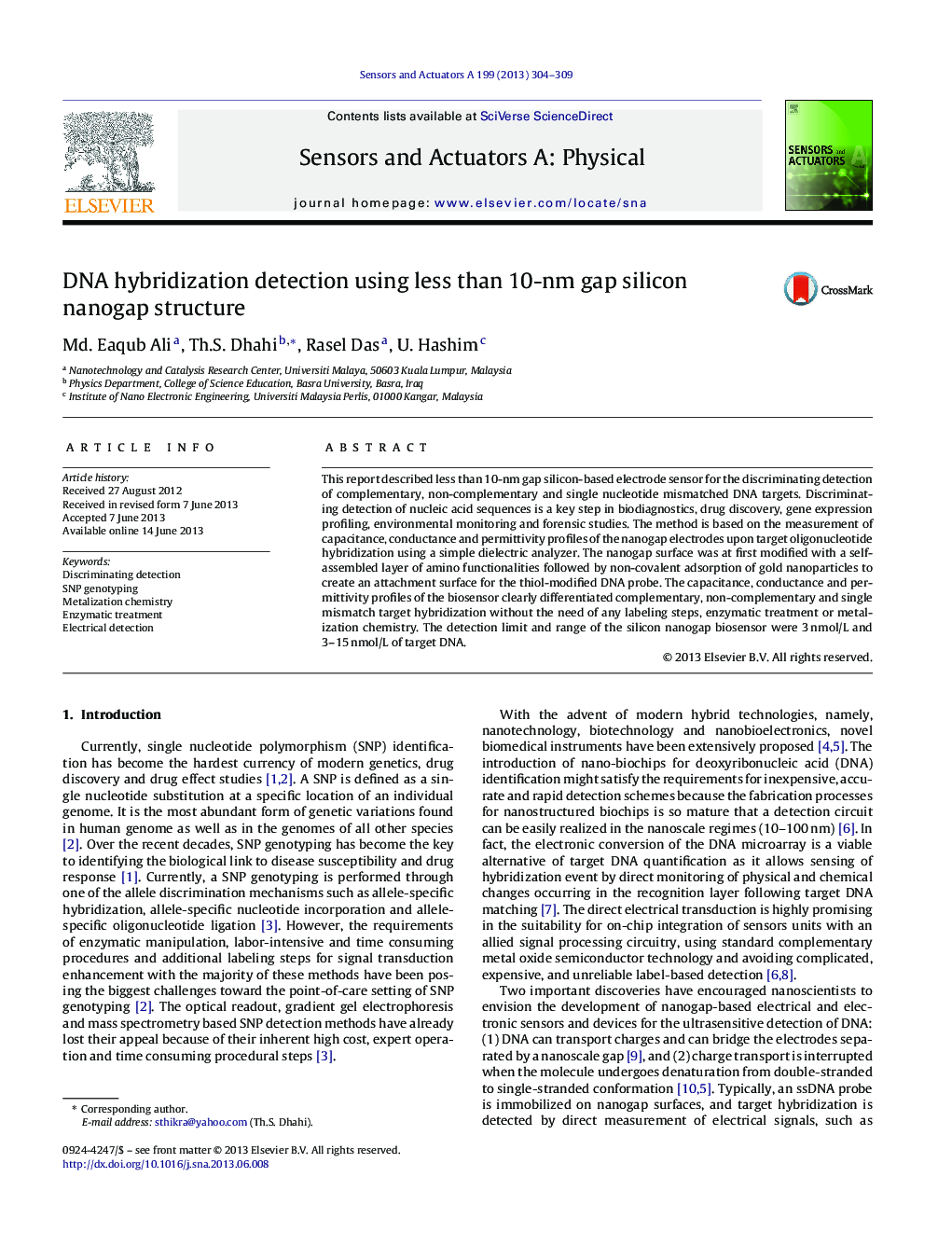| کد مقاله | کد نشریه | سال انتشار | مقاله انگلیسی | نسخه تمام متن |
|---|---|---|---|---|
| 736241 | 1461901 | 2013 | 6 صفحه PDF | دانلود رایگان |

• Less than 10-nm gap silicon nanogap based electrode sensor for SNP genotyping.
• The sensor produced discriminatory signals for complementary, non-complementary, single mismatched DNA targets.
• Detection was performed avoiding any labeling, enzymatic modifications and metallization chemistry.
• Simple instrumentation, easily performable and low cost method.
• Detection range is 3–15 nmol/L and lower limit of detection is 3 nmol/L of target DNA.
This report described less than 10-nm gap silicon-based electrode sensor for the discriminating detection of complementary, non-complementary and single nucleotide mismatched DNA targets. Discriminating detection of nucleic acid sequences is a key step in biodiagnostics, drug discovery, gene expression profiling, environmental monitoring and forensic studies. The method is based on the measurement of capacitance, conductance and permittivity profiles of the nanogap electrodes upon target oligonucleotide hybridization using a simple dielectric analyzer. The nanogap surface was at first modified with a self-assembled layer of amino functionalities followed by non-covalent adsorption of gold nanoparticles to create an attachment surface for the thiol-modified DNA probe. The capacitance, conductance and permittivity profiles of the biosensor clearly differentiated complementary, non-complementary and single mismatch target hybridization without the need of any labeling steps, enzymatic treatment or metalization chemistry. The detection limit and range of the silicon nanogap biosensor were 3 nmol/L and 3–15 nmol/L of target DNA.
Journal: Sensors and Actuators A: Physical - Volume 199, 1 September 2013, Pages 304–309